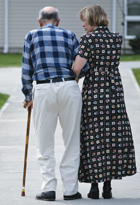
Elder abuse affects an estimated 5 million older Americans each year. While the costs of this abuse add up — $36 billion in losses from financial abuse alone — the collateral damage from this abuse goes far beyond dollar amounts. A new study finds that emergency department (ED) visits and hospitalizations were recorded at higher rates among elderly who were abused in some way for as long as two years after the abuse initially occurred.
The research team examined healthcare utilization records of hundreds of elder abuse victims compared to others in their age group. Nearly 68% of elder abuse victims visited the ED in the 24 months after their mistreatment was identified. In comparison, the rate of ED visits was around 44% among elderly in the same demographic groups who had not reported abuse. Hospitalization rates were higher, too, with almost 39% of abused elders requiring hospitalization in the months after abuse occurred compared to a 26% hospitalization rate among those in the same demographic who were not abused.
Reasons for emergency care visits after elder abuse varied, according to the report. Injuries were one reason for visits, but the study team also found multiple visits across separate hospitals and emergency departments and visits for low-urgency problems were also common among abused elders.
ED use and hospitalization were much higher in abused elders in the 12 months after the abuse occurred than in the 12 months prior to the abuse, the study notes.
What wasn’t answered in the study was exactly why abused elderly more often sought care after abuse, and how this information could be used for earlier abuse detection and intervention.
The study, which was published in the Journal of the American Medical Association (JAMA), highlights the high cost of elder abuse — both financial and otherwise — and the need for better protections. In many cases, abuse is only identified during emergency care visits or other hospitalizations, the research team notes.




